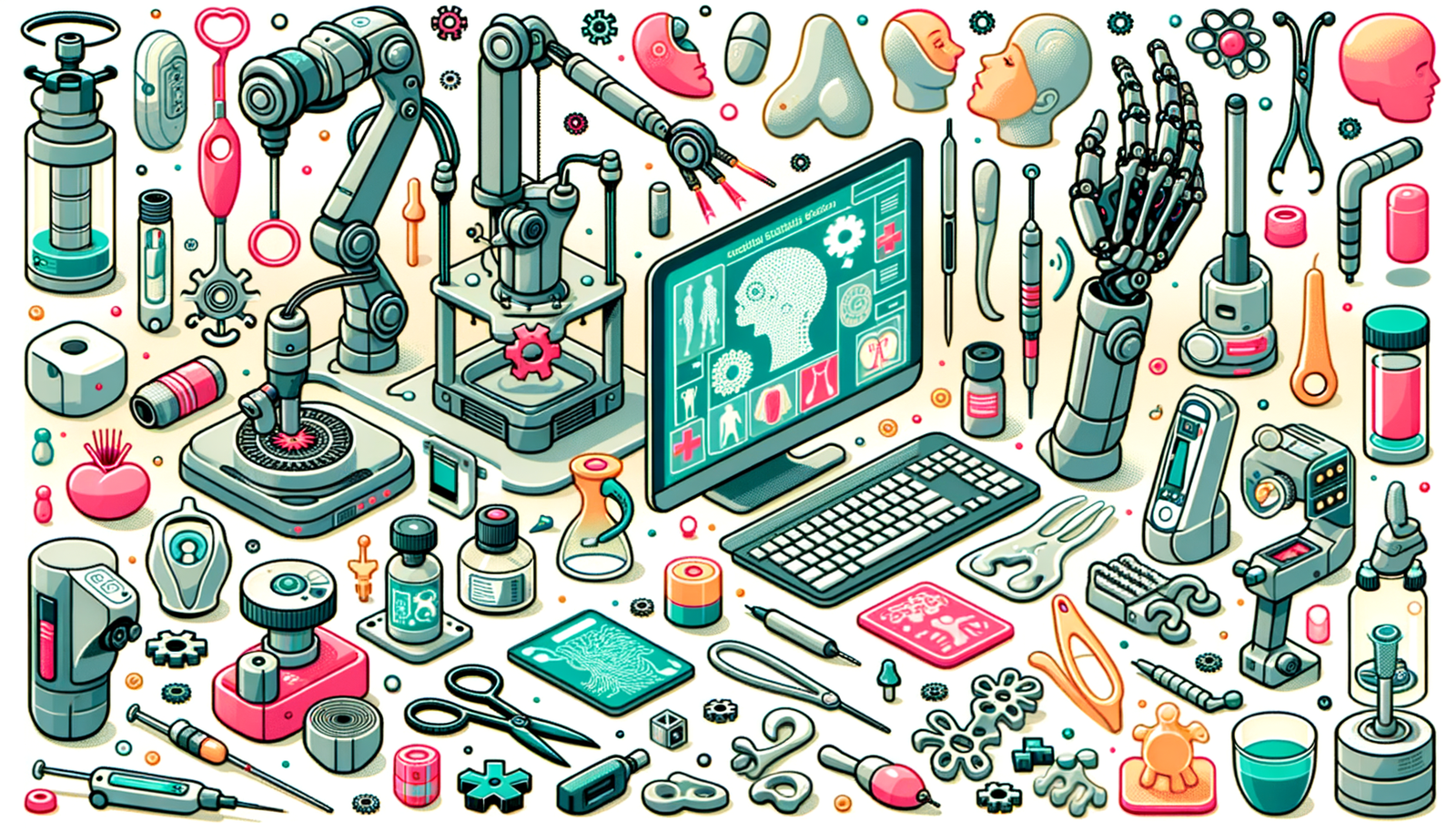Your Cart is Empty
Customer Testimonials
-
"Great customer service. The folks at Novedge were super helpful in navigating a somewhat complicated order including software upgrades and serial numbers in various stages of inactivity. They were friendly and helpful throughout the process.."
Ruben Ruckmark
"Quick & very helpful. We have been using Novedge for years and are very happy with their quick service when we need to make a purchase and excellent support resolving any issues."
Will Woodson
"Scott is the best. He reminds me about subscriptions dates, guides me in the correct direction for updates. He always responds promptly to me. He is literally the reason I continue to work with Novedge and will do so in the future."
Edward Mchugh
"Calvin Lok is “the man”. After my purchase of Sketchup 2021, he called me and provided step-by-step instructions to ease me through difficulties I was having with the setup of my new software."
Mike Borzage
Advancing Precision: Digital Fabrication Techniques Transforming Medical Device Design
August 19, 2024 4 min read


Introduction to Digital Fabrication in Medical Device Design
Overview of Digital Fabrication
Digital fabrication refers to the process of manufacturing products using computer-controlled techniques. It encompasses a range of technologies that enable the precise creation of complex structures from digital models. The general principles involve the automated conversion of digital designs into physical objects, often with high levels of accuracy and repeatability.
Historically, digital fabrication has evolved significantly, beginning with basic computer-aided design (CAD) and CNC machining in the late 20th century. Over the past decades, the advent of additive manufacturing, commonly known as 3D printing, has revolutionized various industries. This evolution has paved the way for intricate and highly customized production capabilities, particularly beneficial in sectors requiring high precision, such as aerospace, automotive, and medical devices.
Importance in Medical Device Design
In the realm of medical devices, the need for **precision and customization** is paramount. Medical devices often require bespoke design to tailor-fit individual patient anatomy or specific medical conditions. Digital fabrication facilitates this need through its ability to produce highly accurate, patient-specific devices rapidly and efficiently.
Examples of medical devices benefiting from digital fabrication include custom prosthetics, dental implants, and surgical instruments. These devices not only improve patient outcomes but also enhance the overall efficiency of healthcare delivery by reducing the time and cost associated with traditional manufacturing methods.
Advanced Techniques in Digital Fabrication for Medical Devices
Additive Manufacturing (3D Printing)
Additive manufacturing, commonly known as 3D printing, involves creating objects by adding material layer by layer, based on a digital model. Several 3D printing technologies are particularly relevant to medical device fabrication:
- Stereolithography (SLA): Utilizes a laser to cure liquid resin into solid plastic. SLA is known for producing high-resolution parts with fine details.
- Selective Laser Sintering (SLS): Uses a laser to sinter powdered material, typically nylon, into solid structures. SLS is valued for its strength and durability.
- Fused Deposition Modeling (FDM): Involves extruding thermoplastic filament through a heated nozzle, layer by layer. FDM is widely used for its cost-effectiveness and versatility.
These technologies have been successfully applied to produce various medical devices, demonstrating the potential of additive manufacturing in transforming medical device development.
Subtractive Manufacturing (CNC Machining)
Subtractive manufacturing, or CNC (Computer Numerical Control) machining, involves removing material from a solid block to create the desired shape. This method is renowned for its **precision and material versatility**, making it suitable for producing intricate medical components.
In medical applications, material considerations are crucial. CNC machining can handle a variety of biocompatible materials such as titanium and stainless steel, ensuring that devices meet stringent medical standards. The integration with digital design software allows for seamless transition from design to production, enhancing efficiency and accuracy.
Hybrid Manufacturing Techniques
Hybrid manufacturing combines the best of additive and subtractive methods to produce **complex medical devices**. This approach allows for the creation of intricate geometries through additive processes, followed by precision finishing using subtractive techniques. The result is a high-quality product that leverages the strengths of both methods.
Example projects using hybrid techniques have shown promising outcomes, demonstrating the potential for innovation in medical device fabrication.
Software Tools and Technologies
Design Software for Medical Devices
The design of medical devices relies heavily on advanced CAD software. Leading options include:
- SolidWorks: Known for its robust functionality and user-friendly interface, SolidWorks is widely used in medical device design for creating detailed 3D models.
- AutoCAD: A versatile CAD software that offers precise drafting and modeling capabilities, essential for designing complex medical devices.
- Materialise Mimics: Specialized medical design software that enables the creation of patient-specific models from medical imaging data, facilitating personalized medical solutions.
Simulation and Testing
Before a medical device can be manufactured, it must undergo rigorous simulation and testing. **Finite Element Analysis (FEA)** is a critical tool in this process, allowing engineers to perform stress testing and predict the device's behavior under various conditions. This ensures that the device meets all safety and performance standards.
**Virtual prototyping** further enhances the design process by allowing designers to test and validate their models in a digital environment. This reduces the need for physical prototypes, saving time and resources.
Regulatory Compliance and Quality Assurance
Medical devices are subject to stringent regulatory standards. Design software often includes features to aid in compliance with standards such as **FDA** (Food and Drug Administration) and **ISO** (International Organization for Standardization). These features ensure that all necessary documentation and tracking are maintained throughout the design and manufacturing process, facilitating smooth regulatory approval and ensuring product quality.
Future Trends and Challenges in Digital Fabrication for Medical Devices
Emerging Technologies
The future of digital fabrication in medical device design is promising, with several emerging technologies on the horizon:
- AI-driven design and optimization: Artificial Intelligence is poised to revolutionize design processes by optimizing geometries and material use, leading to more efficient and effective medical devices.
- Nanofabrication techniques: These techniques enable the creation of micro-scale devices that can operate at the cellular level, opening new possibilities for minimally invasive medical treatments.
Challenges and Considerations
Despite the advancements, several challenges remain in digital fabrication for medical devices. **Biocompatibility** and **material constraints** are significant concerns, as the materials used must be safe and effective for medical use. Additionally, ensuring **reliability and consistency** in mass production is crucial to meet the high standards required in the medical field.
The Future Landscape
The continued advancement of digital fabrication technologies is expected to have a profound impact on healthcare. The potential for **personalized medicine** and **patient-specific devices** is immense, promising improved patient outcomes and more efficient healthcare delivery. As these technologies evolve, they will likely become integral to the design and production of medical devices, driving innovation and improving lives.
Also in Design News

Revolutionizing Telecommunications: The Rise of Advanced Design Software
August 31, 2025 16 min read
Read More
Cinema 4D Tip: Optimizing 2D Matte Integration with Projection Man in Cinema 4D
August 31, 2025 3 min read
Read MoreSubscribe
Sign up to get the latest on sales, new releases and more …



